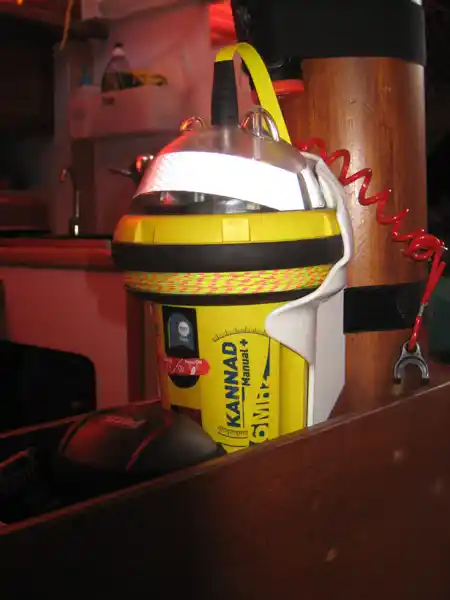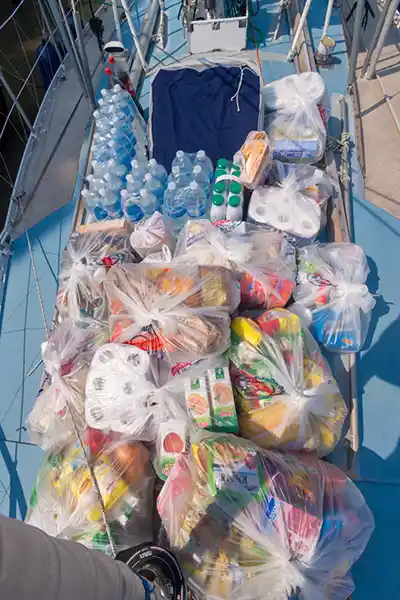How to prepare for an offshore passage?
What if the hardest part of a long crossing was actually setting off? We’ve all imagined ourselves on a sailboat one day, setting off on an adventure, but very few of us have followed up on the dream. Have you always dreamed of crossing the English Channel, sailing to the Balearics or making a transatlantic crossing, but never dared to set off?
This guide will help you get ready to make your dream come true, and explain point by point what you need to prepare before you set off, so you can leave with confidence. It’s true that setting out offshore or on an ocean crossing can seem frightening, but if you’re well prepared, you’ll be able to enjoy your sailing without anxiety.
Don’t let the opportunity pass you by, and start planning your adventure now!
Planning your passage
So, you’ve decided to embark on a blue water crossing. To ensure that your offshore adventure goes smoothly, there are several steps in the preparation process.

Of course, the first thing to do is to decide on your destination, even if it’s only an approximate one. Once you’ve chosen where you’re headed, you can plan your route. To make the crossing easier, determine any waypoints on your route, and also identify areas to be avoided — either because of strong currents, because weather conditions make navigation difficult, or because navigation is forbidden or regulated there (traffic separation schemes for example). And don’t forget to anticipate any paperwork to be completed on departure and arrival.
Finally, before you leave, make sure that the weather forecast is favorable. If you set off in bad weather, the experience may not be that you are looking for. And you could be putting yourself and your crew at risk.
Le choix de l’équipage
If you’re a first-time offshore sailor, it may be a good idea to have several people on board who already have experience of long passages. These crew members will be able to help you make decisions and manage risks on the open sea. What’s more, having several experienced people on board can be a real asset. Especially if seasickness takes a toll on one some among the crew.
Next, choose your crew carefully, since living in close quarters is important during a long crossing. It’s preferable to be with people with whom you know you get along well, to avoid any additional problems during the expedition. It simply won’t be possible for a crew member to stop the adventure after a day or later on during the voyage.
Preparing the boat

Before you set out to sail offshore, it’s important to prepare your boat. In anticipation of a blue water passage, check the riggingAll the spars (masts, booms, yards), cables and ropes needed to hold and maneuver the sails. More. Have the sails serviced too, to make sure they’re in good condition. Make sure the hull and deck are fully watertight. And ideally also haul out before leaving, so you can carry out a thorough refit. This will also allow you to check the condition of the helm and rudder.
Finally, check your various systems (electrical, plumbing, etc.) and the engine. Carrying out a full service on your boat can help you avoid problems while you’re out on the ocean. If you prefer, you can ask a professional to check your boat before you leave.
Finally, remember to take spare parts with you. Identify all the vital equipment on your sailboat, so you know which items need spares. When it comes to electronic equipment, you can plan for redundancy, such as a backup GPS(Global Positioning System) Satellite positioning system with worldwide coverage, enabling users to determine not only their latitude and longitude, but also their heading and speed. More or VHF(Very High Frequency) Radio wave frequency band, between 30 and 300 MHz. By extension, the most widespread marine radio sets, operating on a series of predetermined channels between 156 and 174 MHz, with a range of a few miles to a few dozens of miles. More. You never know, a failure can happen very quickly.
Prepare your equipment
To set off on this adventure, some offshore equipment will be required for ocean passages. A GPS(Global Positioning System) Satellite positioning system with worldwide coverage, enabling users to determine not only their latitude and longitude, but also their heading and speed. More will enable you to navigate and adjust your course if necessary. VHF(Very High Frequency) Radio wave frequency band, between 30 and 300 MHz. By extension, the most widespread marine radio sets, operating on a series of predetermined channels between 156 and 174 MHz, with a range of a few miles to a few dozens of miles. More will enable communications in line of sight. It’s now affordable to take along a personal beacon to locate you in case you go overboard. And satellite communication equipment is fast becoming commonplace.
Don’t forget to register your radio equipment and survival beacons with your maritime radio authority. They are responsible for issuing your ship station license. Depending on your flag, these are :
- the FCC in the United States
- ISED in Canada
- Ofcom in the United Kingdom
- IMRAD in Ireland
- ACMA in Australia
- RSM in New Zealand
To avoid losing your equipment or spare parts, it’s a good idea to secure them. Tie down firmly those on deck and stow snugly those below decks.
Your shore contacts
Before setting off, choose a contact person ashore who will know your intentions: your itinerary, your estimated dates and times of arrival. It’s best if this person is familiar with the possible hazards of blue water sailing, so that he or she doesn’t worry and doesn’t contact the emergency services without legitimate concern. But you should remember to give him/her a deadline by which he/she can notify rescue services if you still haven’t arrived safely. Having a contact person ashore is a real must for your safety when sailing offshore.
You can also have a contact to monitor the weather. If the weather changes, you can prepare yourself and perhaps adjust your route according to what your contact tells you. This person, who keeps you informed of the weather, can be the same person as your shore contact, or a professional router.
Finally, some MRCCs also allow you to lodge a passage plan, with the expected itinerary, your intentions en route, and your estimated arrival times. This is an additional safety feature, which could prove useful if the need arises. If you require assistance, the MRCC will then have all the information they need about you, which will speed up the response.
Provisioning and waste management

Finally, as you approach departure, make sure you have all the provisions you need for a longer-than-expected crossing. You don’t want to have to ration your food in case something goes wrong! Plan to eat a varied diet adapted to the sailing area. It’s worth knowing that fresh produce doesn’t last long at sea. Store fruit and vegetables away from moisture and protect them from shocks.
Finally, you can start managing your waste before you head out. It’s a good idea to get rid of surplus items such as over-packaging, so that you have as little as possible to deal with afterwards. Once you’re offshore, you can only throw organic waste into the sea. You’ll already have to manage your water consumption at sea and keep an eye on electricity. So if you can ease the burden of waste management, by all means do!
Ready to weigh anchor?
Now you know how to prepare for your great adventure. First, take the time to choose your destination, your itinerary, and your departure period according to the season. Then, carefully choose your crew. You’ll be living together for several days, and you may need experienced people. Don’t neglect the preparation of your boat: the more you have checked and maintained your boat before departure, the less likely you are to have to deal with failures. And last but not least, make sure you have contacts ashore who are familiar with your voyage and who can warn you if the weather changes. Now you’re ready to set off on your long passage. Off to the Caribbean, the Aegean Sea or even further afield!
